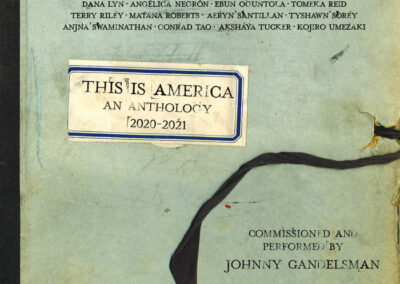Overview
As an artist who has deliberately dug into her family’s lineage to feel more connected with her ancestors, Sofía’s work encourages students to reflect on their own cultural backgrounds. Her insights invite students to question how their own communities influence their creative expression through personal reflection. Additionally, Sofía’s illustrative lyrics make for rich poetic and song-writing analysis. Learn more about different rhythmic patterns, dance/song-styles, and instruments she uses from South America, especially from Argentinean and Andean regions.
Video 1: Virtual Learning with Sofia Viola (5 minutes)
Listen to Sofía Viola discuss the different instruments she uses, their cultural origins and specific significance to her, and how music gives her life as a creative outlet. Over the years, she has become acquainted with a tiny pocket trumpet, violin, Spanish guitar, ronroco (a cousin of the charango), and pandero cuaquero (a tambourine-like instrument used in cuecas, the national folk dance of Chile), most of which she takes on tour for performances. Her music is indeed as spirited as her fashion sense!
Video 2: Sofia Viola in Concert (~45 minutes)
This concert was filmed at the height of the COVID-19 pandemic in partnership with PVD Fest. Despite having tens of thousands of viewers, Sofía Viola’s performance feels intimate and animated, as she breathes life into songs stemming some of the diverse places, cultures, and histories that make South America so very vibrant. Viola sings of finding humor in the mundane, beauty in the natural world, and stories rooted in love.
- Muna Munaqui (0:20)
- Sin Pensamiento Without Thought (1:13)
- Ahorita Right Now (4:49)
- Pintor De Avellaneda The Painter from Avellaneda (8:39)- Tango; “Lunfardo” or slang from the lower socio-economic class
- Vine Hasta Ti I Came to You (10:20)
- Ojos De Aceituna Olive Eyes (14:42)
- La De La Luna That Which Belongs to the Moon (17:32)
- Guyaba y un Cuchillo Guava and a Knife (21: 10) – Written originally in Guarani, an Indigenous language from the rainforests of Paraguay, as well as parts of Brazil and Argentina, Sofía Viola translates the song’s message for her listeners into Spanish. A person descends from a mountain, solo, with only a guava and a knife in their hand—yet they are not afraid. Even though the wind blows and the sun is setting, they know it shall rise again, and find joy in their trust that nature will take care of them.
- Caca En La Cabeza Cr*p [Junk] in Your Head (24:35) This song talks about how consumerism, capitalism, and the media alter our lives, filling our heads with heaps of content that nourishes neither our minds nor souls.
- Suspocisión del Temporal Assumption of the Storm (28:11) As the sky grows cloudy and a rainstorm begins, people wonder why they never fixed the holes in their roof!
- Con Gaspar Al Mar To the Sea with Gaspar (31:36)
- El Rio de La Plata The Plata River (34:28) This song is about the river that flows south from Uruguay, running along the border of Uruguay and Argentina, and lovers on opposite banks. Musically, this song is played with a combination of the rhythmic style named for this river region: cumbia rio-platense and a style of tango known as milonga.
- Alma Gitana Gypsy Soul (39:03) A blend of Andean and gypsy rhythms, this song is played on Viola’s ronroco.
Artist Bio
Sofía Viola, born in Lanús, Argentina, was raised by musical parents: her father, who plays the trumpet, and mother, who is a dancer. At age 11, after an acting opportunity on TV, Sofía was inspired to study theatre and singing. In addition to these passions, her deep respect for the planet motivated her to record her first solo album, Parmi, outdoors, with lighting and tech powered by solar energy. Aside from her native Argentina, Viola has toured in a multitude of countries across the globe such as Germany, Spain, Chile, Brazil, Columbia, Mexico, and more. Her favorite instruments to play are her voice, the Spanish guitar, and the ronroco, an Indigenous Andean style of lute with a body traditionally made from armadillo or tortoise shell, with a sound similar to a charango and mandolin. Sofía enjoys blending a wide variety of musical genres such as soul, bolero, cumbia, tango, rock, and the Argentine “Tropical Wave” style. Themes in her music include, but are not limited to Latin American folklore, love, and ecology.






